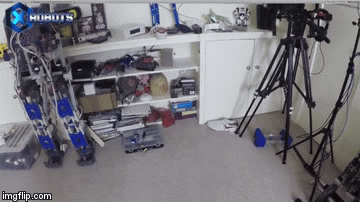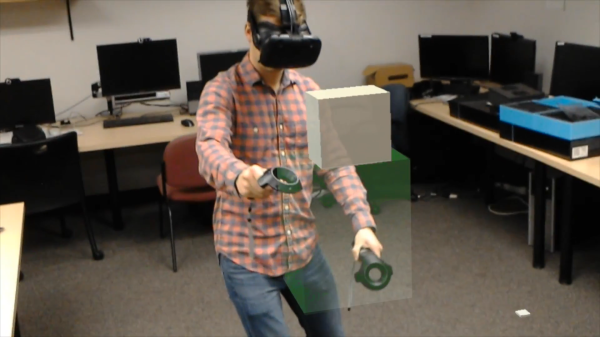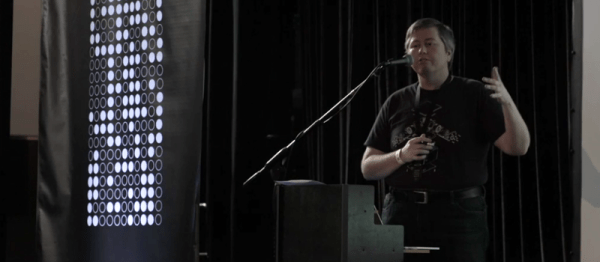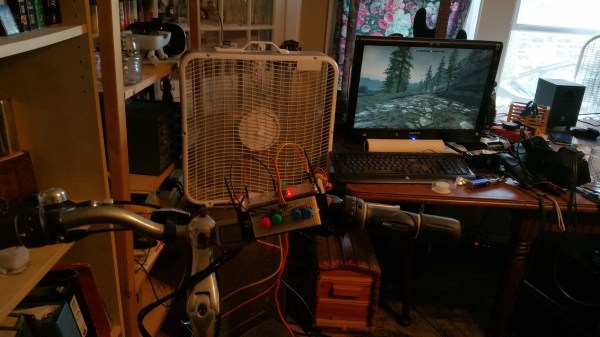Our friend [James Bruton] from XRobots has engaged in another bit of mixed-reality magic by showing how one can seamlessly step from the virtual world into the real world, and back again. Begone, green screens and cumbersome lighting!
Now, most of what you’re seeing is really happening in post-production — for now — but the test footage is the precursor for a more integrated system down the road. As it works now, a GoPro is attached to the front of a HTC Vive headset, allowing [Bruton] to record in both realities at the same time. In the VR test area he has set up is a portal to a virtual green room — only a little smaller than a wardrobe — allowing him to superimpose the GoPro footage over everything he looks at through that doorway, as well as everything surrounding him when he steps through. Unfortunately, [Bruton] is not able to see where he’s going if he is to wear the headset, so he’s forced to hold it in one hand and move about the mixed-reality space. Again, this is temporary.
In action — well, it gets a little surreal when he starts tossing digital blocks through the gateway ‘into’ the real world.















